Maintaining a healthy and vibrant aquarium requires regular plant maintenance, and trimming is a crucial aspect of this care. Proper trimming not only enhances the aesthetic appeal of your aquarium but also promotes the overall health of your aquatic ecosystem. This guide provides a comprehensive overview of trimming techniques, plant types, and essential safety precautions, ensuring your aquarium plants flourish.
From understanding the different types of aquarium plants and their unique trimming needs to mastering various trimming methods and post-trimming care, this guide equips you with the knowledge to keep your aquarium’s flora thriving. Discover the benefits of regular trimming and how to troubleshoot any potential issues.
Introduction to Aquarium Plant Trimming
Maintaining healthy aquarium plants is crucial for a thriving and visually appealing aquatic environment. Regular trimming is a vital part of plant care, promoting their overall health and preventing issues that can negatively impact the entire ecosystem. Proper trimming techniques ensure the aesthetic appeal of the aquarium while fostering a balanced and robust environment for both plants and aquatic life.Regular trimming of aquarium plants is essential for several reasons.
It encourages healthy growth by removing dead or decaying plant matter, promoting new growth and a more vibrant appearance. Trimming also helps to maintain the desired shape and size of plants, preventing them from becoming overgrown and potentially overcrowding the aquarium. This, in turn, maintains a suitable water quality and nutrient balance, avoiding imbalances that can negatively affect fish and other inhabitants.
Importance of Regular Plant Trimming
Regular trimming of aquarium plants is vital for several reasons. It directly impacts the overall health and balance of the ecosystem. Removing dead or decaying plant material prevents the release of harmful substances into the water, maintaining water quality. Trimming also promotes the growth of healthy new foliage, enhancing the visual appeal of the aquarium. This proactive approach prevents overgrowth, which can lead to competition for resources and negatively affect other inhabitants.
Reasons for Aquarium Plant Trimming
Several factors contribute to the need for aquarium plant trimming. Overgrown plants can block light to other plants, impacting their growth. Excessive plant matter can lead to increased waste buildup, potentially affecting water quality. Uneven or disorderly growth can also detract from the aesthetic appeal of the aquarium. In some cases, trimming is necessary to control the spread of unwanted plant species.
Trimming Methods
A variety of trimming methods are employed to maintain the health and appearance of aquarium plants. These techniques can range from simple snips with scissors to more complex approaches using specialized tools. The choice of method often depends on the type of plant, desired outcome, and the overall layout of the aquarium.
Tools and Equipment for Trimming
Proper tools and equipment are essential for efficient and safe plant trimming. The specific tools needed depend on the type of trimming being performed. For general trimming, sharp, clean scissors or pruning shears are suitable. For delicate plants, specialized aquarium plant snips offer a more precise cut. Using clean, sharp tools minimizes the risk of damaging the plant and prevents the introduction of harmful bacteria into the water.
- Scissors/Pruning Shears: These are the most common tools for trimming aquarium plants. They are ideal for a wide range of plants and trimming tasks. Ensure the blades are sharp and clean to avoid damaging the plants and introducing bacteria into the water. Look for high-quality scissors with comfortable handles for extended use.
- Plant Snips: These specialized tools offer a more precise cut, particularly useful for delicate plants or intricate trimming. They typically have a smaller blade size than scissors and are designed for fine work, ideal for maintaining specific shapes or removing smaller sections of the plant.
- Aquarium-safe Clippers: These tools are specifically designed for use in aquariums and are manufactured to be compatible with the water environment. They are made from corrosion-resistant materials and are essential for trimming plants without introducing contaminants to the water. Ensure the clippers are suitable for the size and type of plant being trimmed.
Types of Aquarium Plants and Their Trimming Needs
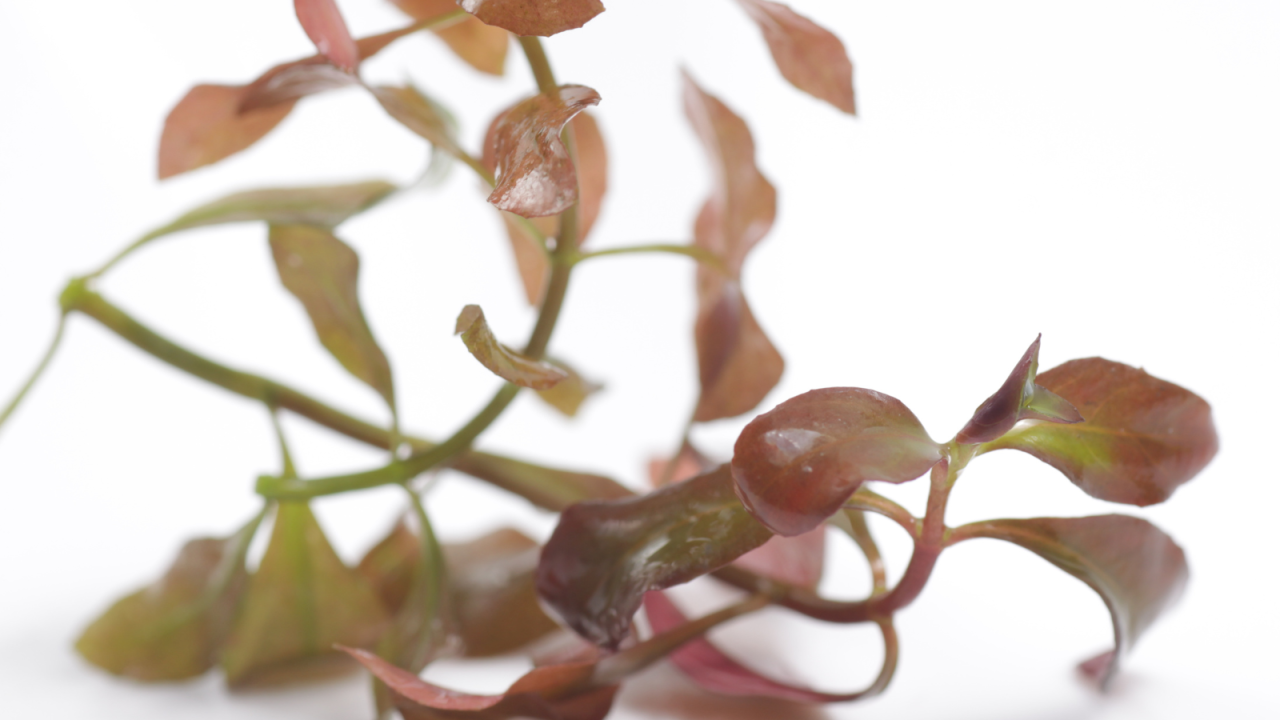
Understanding the diverse needs of aquarium plants is crucial for maintaining a healthy and visually appealing aquatic environment. Different plant types require varying levels of attention, particularly when it comes to trimming. This section will delve into the specific trimming requirements for various plant categories.Different aquarium plants have varying growth habits and aesthetic qualities, and their trimming needs reflect these differences.
Proper trimming not only enhances the visual appeal of the aquarium but also promotes healthy growth and prevents overcrowding.
Floating Plants
Floating plants, often chosen for their aesthetic appeal and ability to create a sense of depth, require regular maintenance. These plants typically have a rapid growth rate, making weekly trimming necessary to maintain their desired appearance. Removing dead or overgrown leaves prevents these parts from decaying and affecting the water quality of the tank. Excessive leaf growth can also block light from reaching other plants, impacting their health.
Submerged Plants
Submerged plants, rooted in the substrate, are commonly used to create dense foliage and provide hiding places for fish. These plants generally require bi-weekly trimming to maintain their size and shape, preventing them from becoming too dense. Proper trimming encourages the growth of new shoots, leading to a fuller and more vibrant display. It also ensures sufficient light and space for other aquatic inhabitants.
Stem Plants
Stem plants, with their long, flowing stems, are frequently used to add a sense of dynamism to the aquarium. These plants often benefit from monthly trimming, which encourages new growth and prevents overcrowding. Removing older leaves or stems can help stimulate the growth of new ones, maintaining the desired density and preventing the plants from becoming overly dense.
Proper trimming helps to keep the aquarium balanced and aesthetically pleasing.
Trimming Frequency Table
| Plant Type | Trimming Frequency | Tools Needed | Specific Needs |
|---|---|---|---|
| Floating plants | Weekly | Sharp scissors/pruning shears | Remove dead or overgrown leaves to maintain visual appeal and prevent decay. |
| Submerged plants | Bi-weekly | Sharp scissors/pruning shears, tweezers | Maintain proper size and shape to prevent overcrowding and ensure sufficient light and space for other aquatic inhabitants. |
| Stem plants | Monthly | Sharp scissors/pruning shears | Encourage new growth and prevent overcrowding, maintaining the desired density and aesthetic appeal. |
Trimming Techniques and Procedures
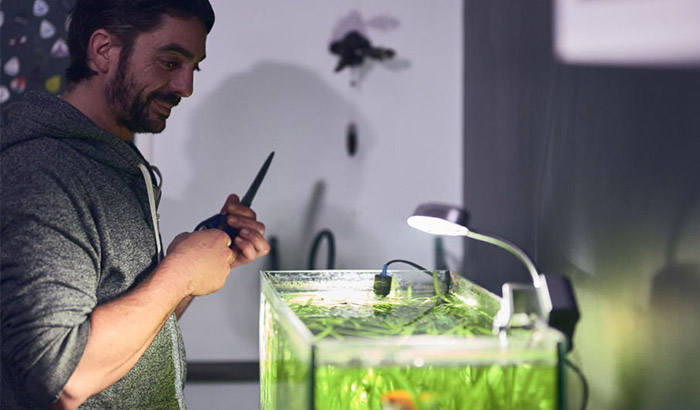
Proper aquarium plant trimming is crucial for maintaining a healthy and visually appealing aquatic environment. It promotes plant growth, removes decaying matter, and prevents the spread of disease. Effective trimming also enhances the overall aesthetic appeal of the aquarium by shaping the plants to your desired form. This section details the specific techniques and procedures for trimming various types of aquarium plants, along with essential safety precautions.
Floating Plant Trimming
Floating plants often require regular trimming to maintain their aesthetic appeal and prevent overcrowding. Improper trimming can lead to the development of fungal or bacterial issues within the aquarium. The focus should be on removing any dead or decaying leaves and stems to prevent them from rotting and contaminating the water.
- Technique: Snipping is the primary technique for floating plants. This involves using sharp, clean scissors to carefully remove dead or decaying parts. A sharp blade minimizes tearing, which can introduce potential infection points.
- Procedure: Locate and identify dead or decaying leaves and stems. Using sharp scissors, snip the affected portions at their base. Avoid damaging healthy plant tissue.
Submerged Plant Trimming
Submerged plants, like those rooted in the substrate, need a different approach. Trimming is vital for maintaining their shape, preventing overcrowding, and ensuring adequate light penetration to the entire aquarium.
- Technique: Cutting is the most effective method for submerged plants. Sharp scissors or pruning shears are recommended to achieve clean cuts. Clean tools prevent the spread of bacteria and other pathogens.
- Procedure: Identify areas of unwanted growth or leaves that have become overgrown. Using sharp scissors or pruning shears, cut the unwanted growth at the base of the plant. This prevents the spread of disease and promotes healthier plant growth.
Stem Plant Trimming
Stem plants, known for their long, flowing stems, require a specific trimming technique to encourage bushy growth. Improper trimming can lead to uneven growth and a less visually appealing aquarium.
- Technique: Pruning is the preferred method for stem plants. Sharp scissors or pruning shears are essential for achieving clean cuts. This helps to maintain a desired aesthetic.
- Procedure: Trim the stem to encourage the development of new growth points. This can be done by cutting the stem at an angle. This angle allows for increased surface area for new growth and reduces the risk of damage.
- Example: If a stem plant is growing too tall or sprawling, prune the stem to encourage bushier growth from the remaining sections.
Trimming Tool Requirements
| Plant Type | Trimming Method | Tools | Procedure |
|---|---|---|---|
| Floating plants | Snipping | Sharp scissors | Snip off dead or decaying leaves and stems. |
| Submerged plants | Cutting | Sharp scissors/pruning shears | Cut off unwanted leaves/growth at the base of the plant. |
| Stem plants | Pruning | Sharp scissors/pruning shears | Trim the stem to encourage bushier growth. |
Safety Precautions
- Sterilize tools: Thoroughly clean and sterilize all trimming tools between uses to prevent the spread of disease or contamination.
- Avoid excessive trimming: Avoid over-trimming plants, as this can stress them and potentially harm them.
- Monitor water quality: Monitor the water parameters after trimming to ensure there are no drastic changes. This helps to maintain a stable environment for the aquarium.
- Handle plants gently: Handle plants gently to avoid tearing leaves or damaging the plant’s structure. This minimizes the risk of introducing pathogens.
Maintaining Plant Health After Trimming
Proper trimming is crucial for aquarium plant health, but maintaining that health afterward is equally important. Neglecting post-trimming care can lead to stress, disease, and even plant death. This section details the essential steps to ensure your trimmed aquatic plants thrive.Post-trimming care involves several key aspects, including proper disposal of plant matter, maintenance of plant health, disease prevention, water changes, and adjustments to lighting and fertilization.
These steps are essential for a thriving aquarium ecosystem.
Disposal of Trimmed Plant Matter
Proper disposal of trimmed plant matter prevents the buildup of organic waste, which can lead to algae blooms and other water quality issues. Avoid discarding the plant matter directly into the water. Instead, remove it carefully from the aquarium and dispose of it in a compost bin or other appropriate waste receptacle. This minimizes the introduction of harmful organic matter into the aquarium.
Maintaining Plant Health After Trimming
Maintaining plant health after trimming is a vital aspect of aquarium plant husbandry. Keeping plants healthy involves regular monitoring of their overall condition, including checking for signs of stress, disease, or nutrient deficiencies. Ensure the plants are getting enough light and nutrients, which is crucial for their recovery and continued growth. Pay attention to any discoloration or unusual growth patterns.
Preventing Plant Diseases After Trimming
Preventing plant diseases after trimming is a crucial aspect of maintaining a healthy aquarium. Stress from trimming can make plants more susceptible to various diseases. By maintaining good water quality and ensuring proper plant nutrition, you can help prevent infections. Regular water changes, appropriate lighting, and balanced fertilization are critical to keeping the plants healthy and resistant to disease.
The right combination of these factors reduces the risk of disease outbreaks.
Importance of Water Changes After Trimming
Water changes are crucial for maintaining water quality and removing excess nutrients and waste products released by the trimmed plants. Regular water changes, usually around 25-50% weekly, are recommended to help maintain the optimal water parameters for the plants. The water change process removes excess nutrients and toxins, thus minimizing the risk of plant stress and subsequent diseases.
Removing excess nutrients prevents nutrient imbalances, which are detrimental to healthy plant growth.
Optimal Lighting and Fertilization Requirements After Trimming
Lighting and fertilization are essential for plant recovery and growth after trimming. Trimmed plants often require a slight adjustment in lighting and nutrient levels. If the plant was previously receiving intense lighting, consider reducing it for a few days to allow it to adjust. Likewise, adjust fertilization based on the plant’s current needs. Plants might need slightly higher nutrient levels during the initial recovery phase.
Monitoring the plants closely and adjusting the fertilization schedule as needed ensures optimal growth and health. For instance, some plants may require a higher concentration of iron after trimming to support the regrowth of leaves.
Troubleshooting Common Trimming Issues
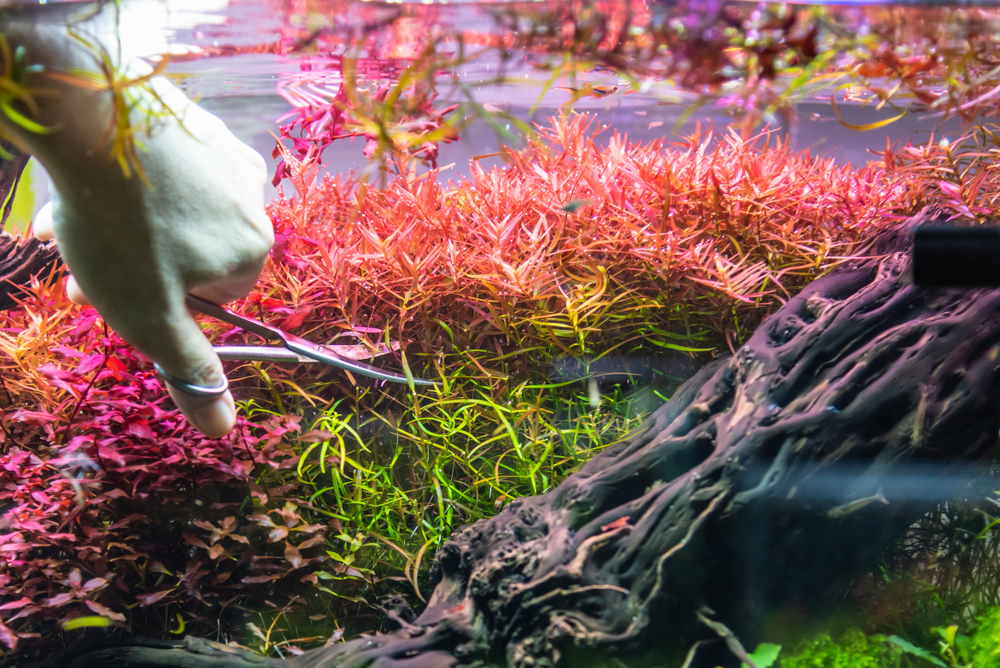
Proper aquarium plant trimming is crucial for maintaining a healthy and vibrant aquatic ecosystem. However, occasional problems can arise. Understanding the potential issues and their solutions is vital for successful plant care. Addressing these problems proactively can prevent significant setbacks and ensure your plants thrive.
Identifying Common Trimming Problems
Recognizing issues early on allows for timely intervention. Common problems include slow growth, plant death, and damage from the trimming process itself. These issues can stem from various factors, including inadequate light, insufficient nutrients, poor water quality, or even inappropriate trimming techniques.
Reasons Behind Trimming Problems
Several factors can contribute to trimming difficulties. Insufficient lighting, for example, can restrict photosynthesis, hindering growth and making plants more susceptible to disease. Nutrient deficiencies can similarly stunt growth. Overcrowding can lead to competition for resources, affecting plant health and potentially causing plant death. Poor water quality, characterized by high ammonia or nitrite levels, can damage plants, making them more vulnerable to stress.
Inadequate trimming techniques can also result in unnecessary plant damage.
Solutions for Trimming Problems
Addressing these problems requires a systematic approach. For example, if plants are not growing, adjusting lighting levels and introducing supplemental fertilizers can stimulate growth. If plants are dying, consider trimming overcrowded plants and performing regular water changes to maintain water quality. To mitigate trimming damage, ensure precise cuts, use sharp tools, and avoid damaging healthy plant tissue.
Addressing Plant Damage from Trimming
Plant damage, though a minor concern if done correctly, should be addressed immediately to promote healing. The key is to prevent further damage. This can be achieved by ensuring clean cuts and by not removing more than a third of the plant’s foliage at any given time. Monitoring the plant’s recovery and adjusting care accordingly is crucial.
Summary of Trimming Problems and Solutions
| Problem | Cause | Solution |
|---|---|---|
| Plants are not growing | Insufficient light or nutrients, improper trimming | Adjust lighting, add fertilizer, use sharp tools for trimming, avoid excessive pruning. |
| Plants are dying | Overcrowding, poor water quality, improper trimming, disease | Trim overcrowded plants, perform water changes, treat for disease, ensure proper trimming technique, use sharp tools. |
| Plants show signs of damage after trimming | Unnecessary trimming, improper trimming techniques | Ensure clean cuts, use sharp tools, avoid excessive trimming, monitor for recovery, adjust care accordingly. |
| Brown tips or edges on leaves | Water quality issues, nutrient deficiencies, temperature fluctuations, or chlorine | Adjust water parameters, supplement with appropriate fertilizers, monitor temperature, and consider a water conditioner. |
Illustrative Examples and Visual Aids
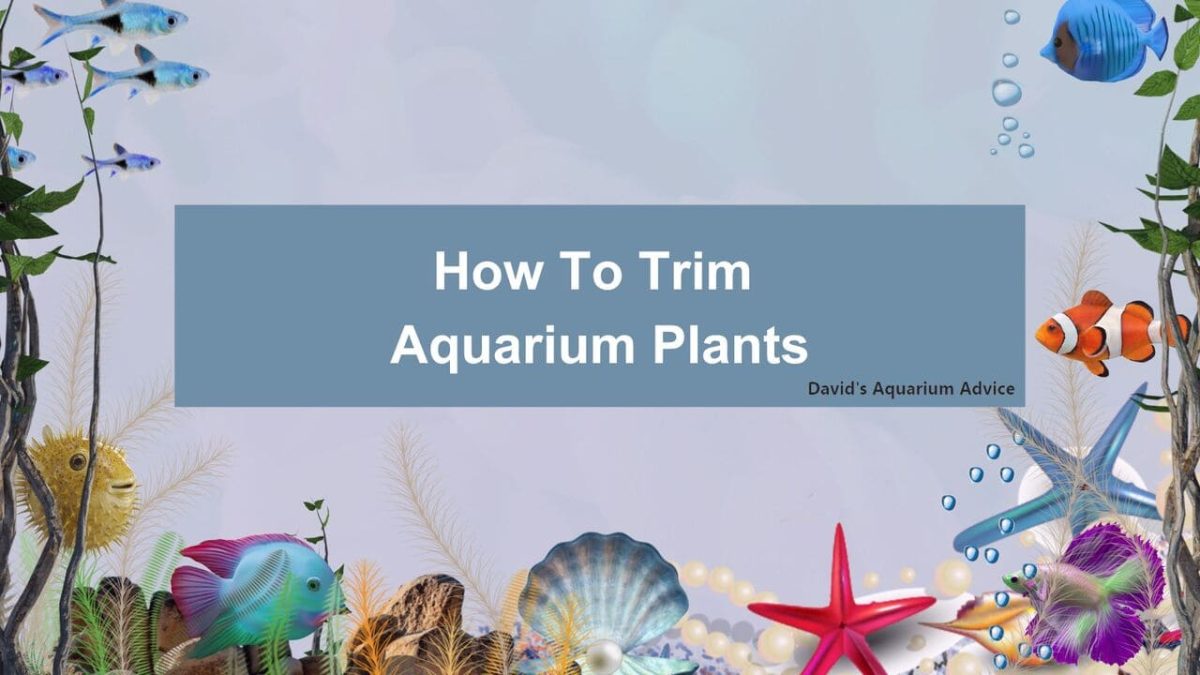
Visual aids are crucial for understanding the nuances of aquarium plant trimming. Detailed descriptions and diagrams help visualize the process, ensuring accurate and effective trimming techniques for various plant types. This section provides examples of common aquarium plants, their specific trimming needs, and illustrates the techniques using clear diagrams and a summary table.
Examples of Aquarium Plants Suitable for Trimming
Numerous aquarium plants respond well to trimming, enhancing their aesthetic appeal and promoting healthy growth. Some popular choices include Java Fern, Anubias, and various types of moss. These plants exhibit different growth patterns and require varying approaches to trimming. For instance, Java Fern tends to have a more robust structure, while moss typically needs careful attention to maintain its aesthetic appeal.
Trimming Process for Java Fern
Java Fern, a popular choice for planted aquariums, often benefits from trimming to maintain its shape and prevent overcrowding. The trimming process is straightforward. Firstly, identify the sections of the plant you want to remove. Use sharp, clean trimming tools to cut the plant at the desired level. Avoid damaging the rhizome (the main stem) to prevent inhibiting further growth.
Use a pair of sharp, curved scissors for the task. Diagram 1: [Diagram illustrating the Java Fern, highlighting the rhizome and areas to be trimmed, along with a pair of curved scissors.]
Trimming Process for Anubias
Anubias plants are known for their resilience and ability to tolerate various conditions. Trimming Anubias is usually done to remove dead or decaying leaves, to maintain the plant’s aesthetic shape, or to prevent the plant from becoming too large for the aquarium. The trimming process is simple: Locate any discolored or decaying leaves. Carefully use a sharp, clean pair of pruning shears or scissors to cut the leaf at the base of the plant, leaving a small portion of the stem to prevent damaging the plant.
Diagram 2: [Diagram illustrating the Anubias plant, highlighting the leaves and the area to be trimmed. Include a diagram of pruning shears or scissors.]
Trimming Process for Moss
Moss, a popular addition to aquariums, is often trimmed to maintain its aesthetic appeal and encourage healthy growth. Trimming moss involves removing excess growth to prevent it from becoming too dense or covering other plants. Use very sharp and precise scissors or small, sharp, curved scissors. Diagram 3: [Diagram illustrating the moss, highlighting the area to be trimmed.
Include a diagram of a small, sharp, curved scissors.]
Summary Table of Trimming Methods and Tools
| Plant Type | Trimming Method | Tools | Diagram |
|---|---|---|---|
| Java Fern | Remove unwanted growth from stems, avoiding rhizome damage. | Sharp, curved scissors | Diagram 1 |
| Anubias | Remove dead or decaying leaves, maintaining shape. | Sharp pruning shears or scissors | Diagram 2 |
| Moss | Remove excess growth to maintain aesthetics and prevent overcrowding. | Small, sharp, curved scissors | Diagram 3 |
Closure
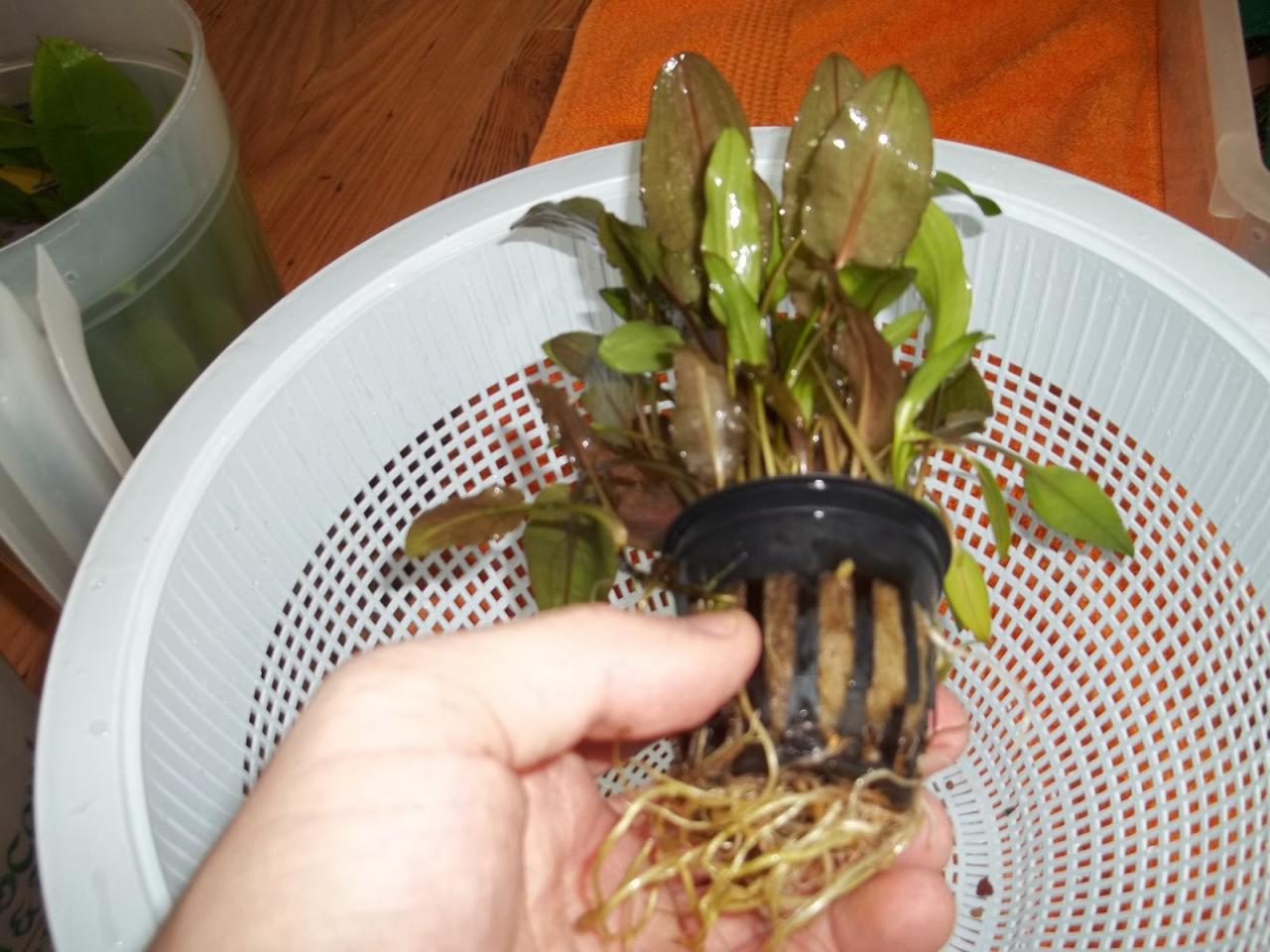
In conclusion, trimming aquarium plants is an essential part of aquarium maintenance. By understanding the various plant types, trimming techniques, and post-trimming care, you can create a healthy and visually appealing environment for your aquatic ecosystem. This guide provides a comprehensive approach to ensure your plants thrive and contribute to the overall well-being of your aquarium.